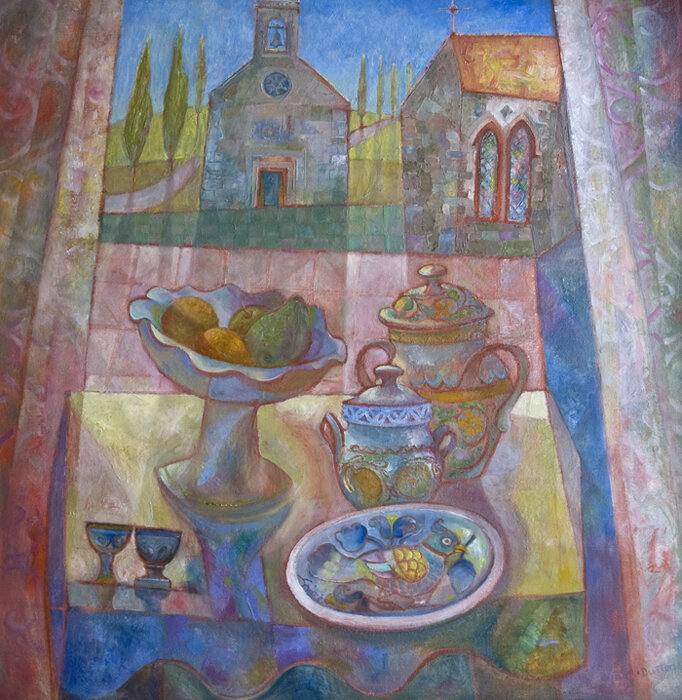Martin Dutton SWAc
Martin Dutton SWAc was born in Uttoxeter, Staffordshire. He lived and worked for many years in the North of England as a painter and lecturer in Further and Higher Education, culminating as Head of Department for 13 years at Bradford College. He retired from education and moved to Devon to focus on painting.
Now well-established in the South West, he has been elected to the South West Academy of Fine and Applied Art, is president of the Teignmouth Art Society and a committee member of the Devon Art Society and Torbay Guild of Artists.
Martin's paintings belong to that long tradition of romantic response to the light and colour of the natural world, yet they also contain within them deeper meanings and references as our imagination is carried into the image. His work exudes painterly flair and visual lyricism. They are truly paintings for lasting enjoyment and contemplation.
John Hoyle, The Hoyle Gallery, Halifax
Over recent years Martin has developed the still life/landscape theme as the major focus of his work. This has provided him with an ideal vehicle for expressing a range of visual ideas to do with colour and mood, surface expressiveness, pictorial structure and iconography.
The Landscape Awakes, Ménerbes, Provence
Knight Game
Whenever Martin consciously uses iconography (builds a narrative into a picture) it can be a whimsical and anecdotal detail in the overall composition (as in The Landscape Awakes - Menerbes, Provence No. 1) or it can be central to the compositional layout (as in Easter Still Life and Abandoned Game). Ideas for the still life and landscapes usually derive from travel experiences and related in-situ studies.
The ideas are born out of digested memories and a creative need to work with colour and pigment to produce images that evoke the lyrical nostalgia of experiences in beautiful places.
The compositional arrangement of the various elements within the paintings is usually derived from the format of a table in front of an open window. This compositional device provides a formal visual and physical structure which gives both stability to the picture and also places the viewer within an interior looking out on to an evocative land or seascape. Objects and spaces are often distorted from traditional pictorial perspective according to the artist's intuitive sense of the rhythmic dynamics of picture making (which also relates back to his involvement in abstract painting).
The viewer's eye is invited to pass beyond the still-life through the window and out into the infinite space of nature. As the eye passes through, so does the mind and imagination, escaping into the refreshing freedom of the natural world. We breathe more deeply and calmly in front of these images.
They conjure in us nostalgic thoughts, digested memories, absorbed experiences and hopefully, our spirits are elevated with an inner glow.








